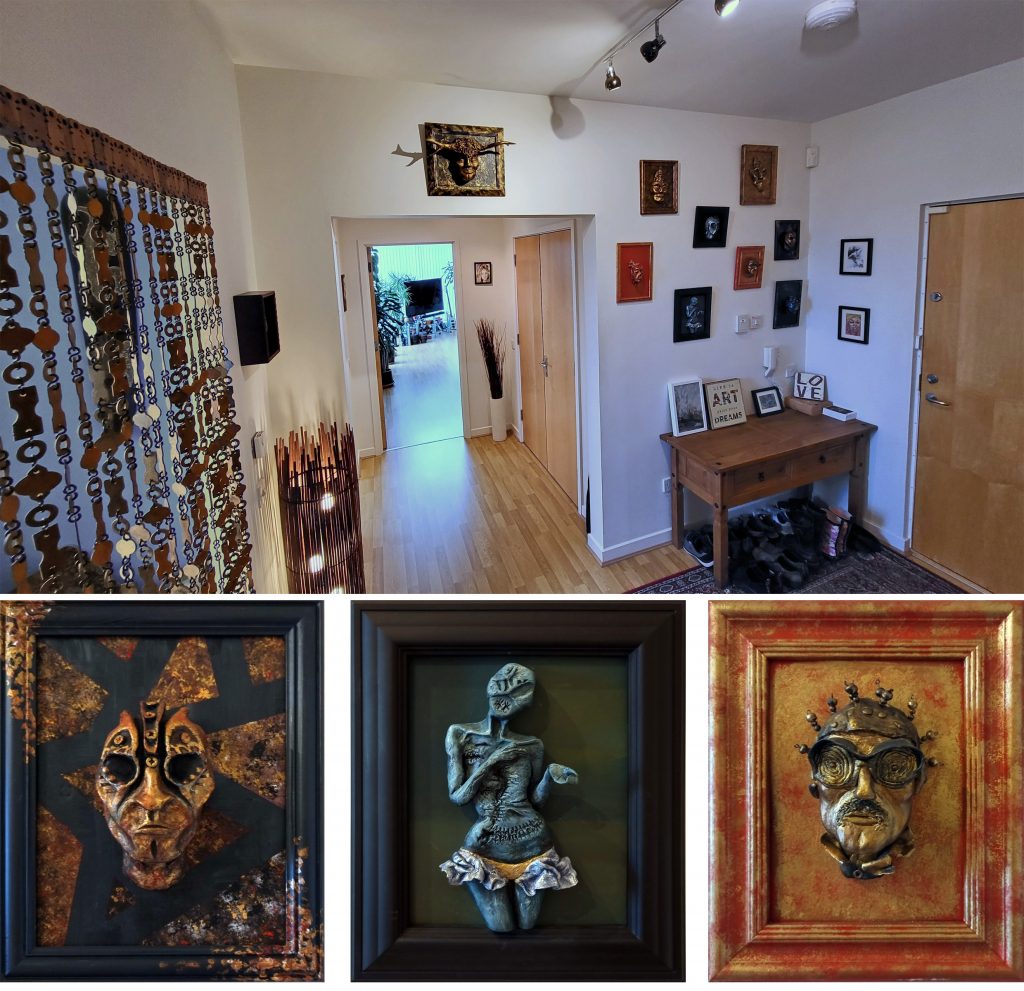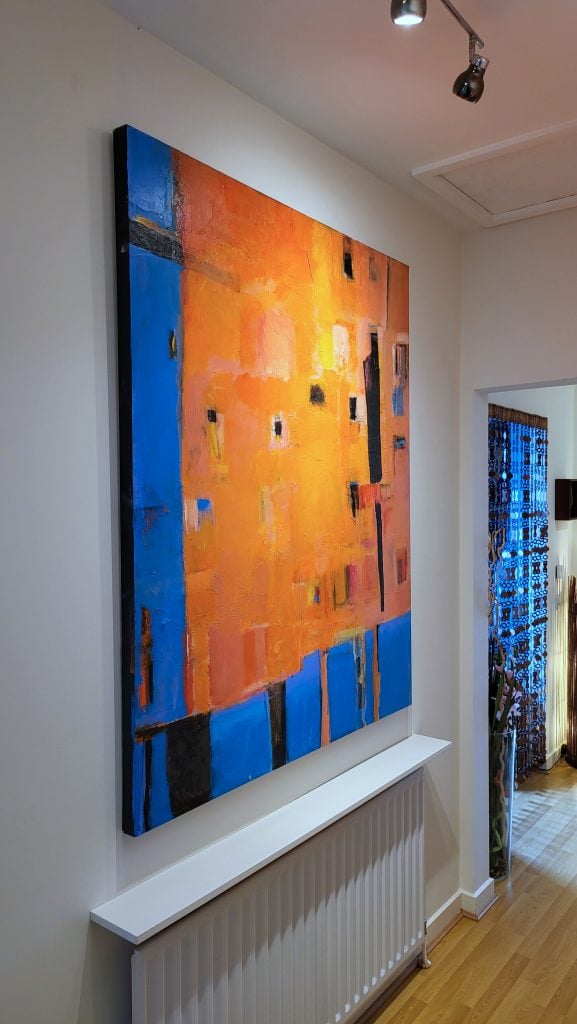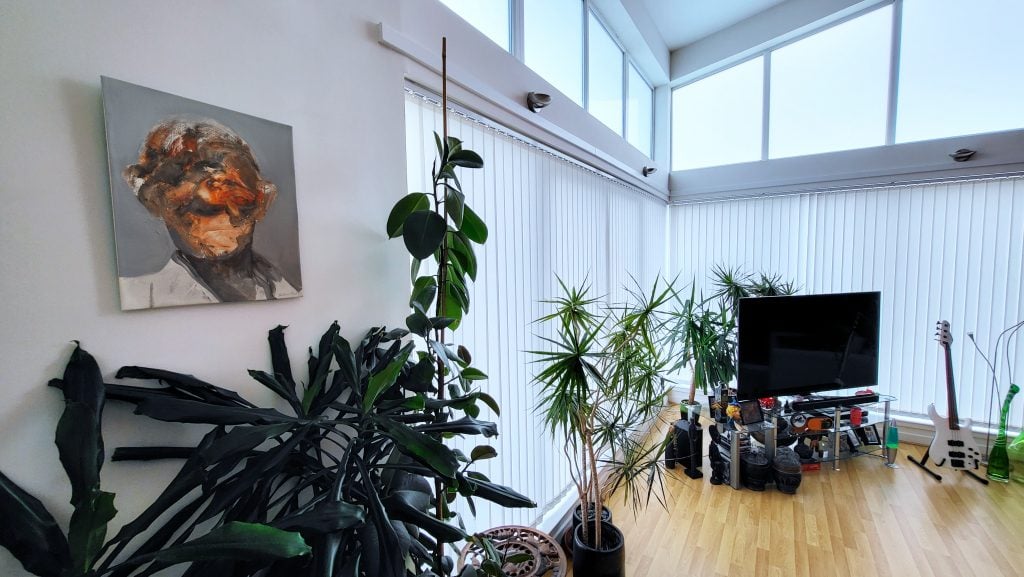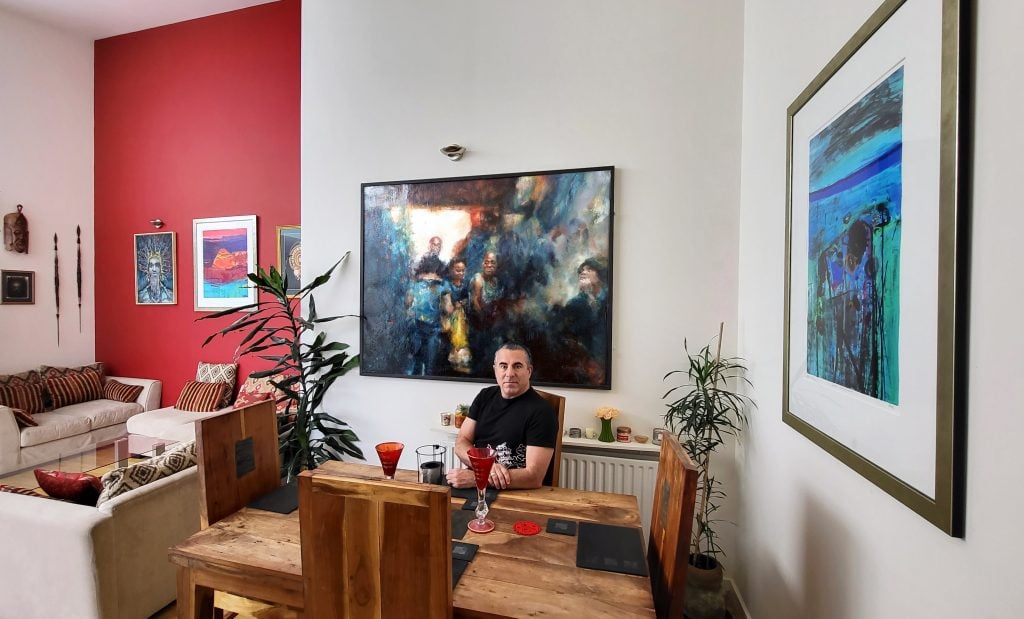Trevor Jones is getting ready to party.
The Canadian Scottish artist is hosting an ultra-exclusive blowout for owners of his wildly successful NFT, The Bitcoin Angel, this weekend in Stirling, Scotland. And in a mark of the largesse he accrued through the digital art market, he’s rented out a whole castle to fête his success.
Originally a traditional painter (or “trad” in today’s parlance), Jones segued into the digital art realm through a fascination with art and technology. By integrating AR elements, near-field communication tags, and other digital elements into his work, his paintings hone in on themes surrounding cryptocurrency.
Jones dropped his genesis NFT in 2019, but the Stirling Castle party is for hodlers (crypto slang for “holders”) of the open-edition NFT based on his painting The Bitcoin Angel (2021), which broke sales records when it generated around $3.2 million in just seven minutes earlier this year. Based on Gian Lorenzo Bernini’s Ecstasy of Saint Teresa (1652), it depicts an angel sailing an arrow into the saint’s heart, backdropped by a gold Bitcoin token.
We caught up with the artist from his home in Scotland ahead of the exclusive event about what’s in his personal art collection and how he’s re-envisioning his display to incorporate NFTs.

Courtesy Trevor Jones.
What was your first purchase (and how much did you pay for it)?
My first purchase was a large encaustic painting by Emily Ponsonby—a very dark scene of a Haitian street market she’d visited. I think I paid £1,400 for it. I’d just graduated college and although it was a huge amount of money for me at the time, it’s an absolute stunning work and as soon as I saw it, I knew I had to have it. Another wonderful thing about the painting is, in the summer when the sun is shining, which isn’t often in Scotland, the room heats up and I can smell the beeswax if I’m near it.
What was your most recent purchase?
My most recent purchase was an NFT and physical package titled Huitzilopochtli by the very talented Dutch artist Daniel Martin. The physical painting was part of a wonderful collaborative project involving four artists who worked together at a residency in Mexico. Amusingly, they named the project Peyote Ugly. Of course, I’m a big fan of art-and-tech collaborations, which Peyote Ugly was fully loaded with, including the AR component for Huitzilopochtli, so I can scan the painting and engage the NFT animation that I own.
Which works or artists are you hoping to add to your collection this year?
I’m launching a podcast this week called Art Angels in which I’m interviewing up-and-coming artists in the NFT scene and introducing them to three top art collectors, who will then bid on the artist’s latest work. I’m going to attempt to outbid some of these big collectors and pick up work by the artists I’ll be interviewing.

Courtesy Trevor Jones.
What is the most expensive work of art that you own?
Not the most expensive work I own, but an NFT La Peste Bleue by my good friend, the late, great Alotta Money (AKA Philippe) is by far the most precious work of art in my collection. I paid $8,888 for it. It’s an animation piece and is exemplary of Alotta’s surreal, nonsensical, subversive style that keeps me intrigued, entertained, laughing out loud and scratching my head all at the same time. Alotta was a genius and is missed dearly by the entire crypto-art community.
Where do you buy art most frequently?
I buy almost all my art now from various NFT platforms such as objkt (Tezos), SuperRare, MakersPlace, NiftyGateway, and OpenSea. As I tend to support more traditional artists entering into this new, digital space I occasionally receive an original painting or print as a gift or as part of the NFT purchase. However, my wife and I are planning to move somewhere a little warmer in the next year or two, so we’ll be needing a lot more physical art for the bigger home, plus digital screens to display our NFTs.
Is there a work you regret purchasing?
There are a few but I’d rather not go into details.

Courtesy Trevor Jones.
What work do you have hanging above your sofa? What about in your bathroom?
We have a wonderful print, Autumn Summer by one of Scotland’s most loved painters and printmakers, Barbara Rae, plus Daniel’s Huitzilopochtli, and then an exceptional print titled Balance II by dark, digital artist Billelis. This artwork also came with the 1/1 NFT that I purchased. There is no art in the bathroom.
What is the most impractical work of art you own?
Many may argue that my entire NFT digital collection is impractical in that I can’t hang a jpg or MP4 file on the wall to admire, but I disagree. Not only are there more and more companies producing NFT display screens of all sizes, but I can showcase all my digital artwork in custom built virtual reality galleries in the metaverse. Viewing artwork with a VR headset in the most spectacular, gravity defying gallery space is quite an experience.
What work do you wish you had bought when you had the chance?
Definitely a 1/1 NFT artwork by the pioneer crypto-artist XCOPY.










